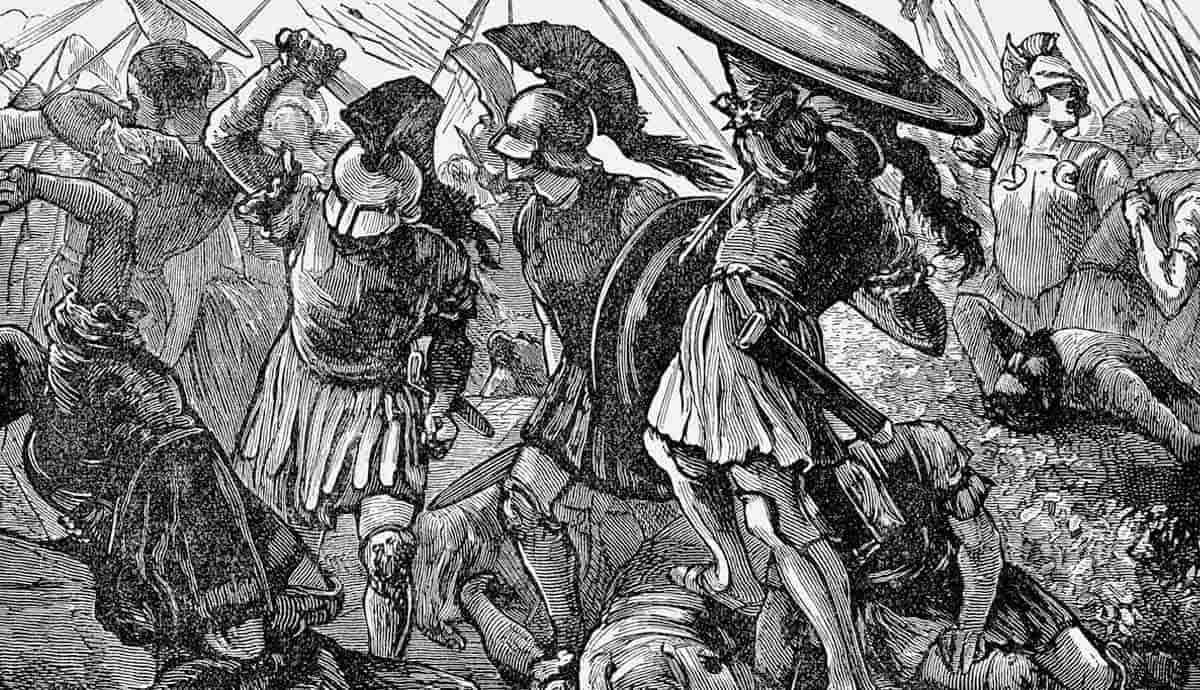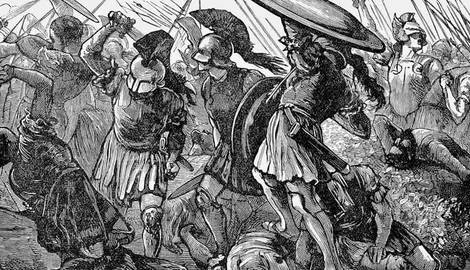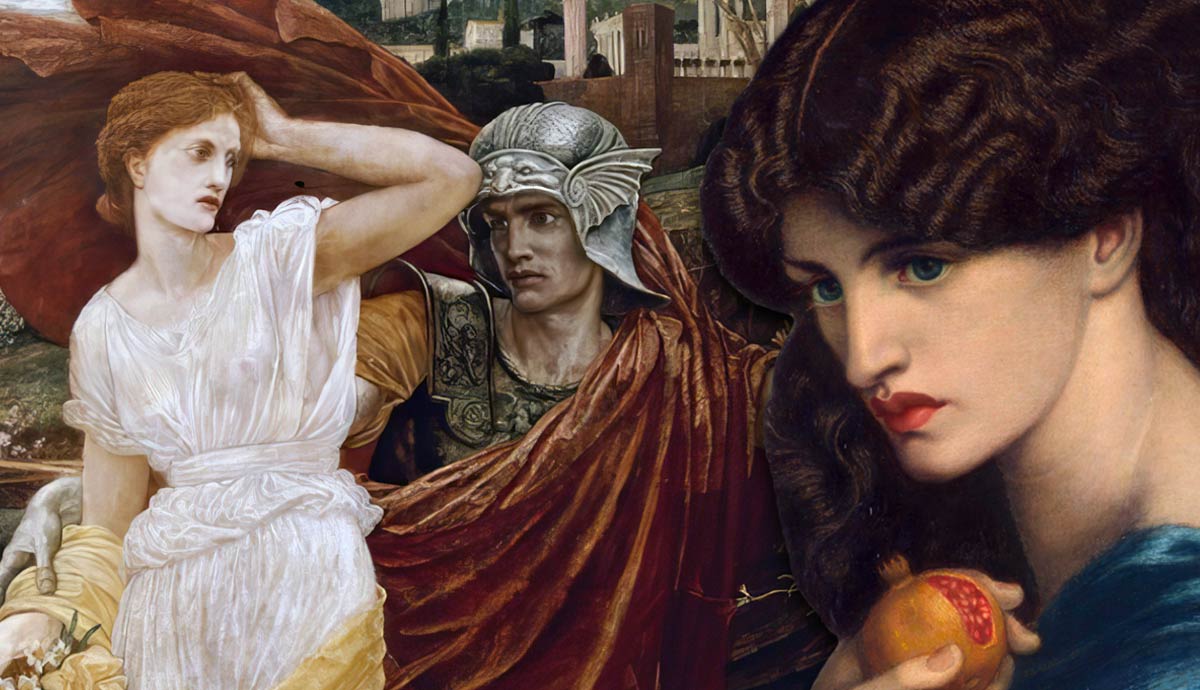
One afternoon in early August 338 BCE, an allied army of Athenian and Theban soldiers cracked under the pressure of Philip II of Macedon’s phalanx. The Battle of Chaeronea in central Greece was the beginning of the end of an era. Two of the great city-states that had dominated the Aegean for two centuries were defeated, and a new type of power replaced them.
Chaeronea capped the extraordinary rise of Philip II and Macedon. Before Philip, the Macedonian monarchy was a peripheral player in the Greek world. Following the battle, Philip was the greatest power in Greece, and his son, Alexander, would soon reshape the Mediterranean world.
The surviving sources for the Battle of Chaeronea are limited, so there is much we do not know about what happened. But it is clear that it was a day that changed history.
Philip II & the Rise of Macedon

Macedon occupied what is now northern Greece. In contrast to the democratic and oligarchic city-states (polis or poleis in the plural) of the south, Macedon was a monarchy. Ruling a fractious kingdom and frequently facing devastating invasions and raids from the neighboring Illyrians, Thracians, and other peoples to their north, the Macedonian kings were minor figures on the Aegean stage. But the result of one such invasion in 360 BCE brought Philip II (359-336 BCE) to the throne and changed Macedon’s fortunes.
After his brother Perdiccas III (365-360 BCE) was killed in battle with the Illyrians, Philip inherited a crisis, but he came to the throne with energy. Within a year, Philip had seen off the Illyrians and set about reforming the military. The army grew in size and skill, and Philip gradually expanded his kingdom and secured new alliances in the 350s.
A decade after the crisis that made Philip king, he had taken a string of key northern cities, secured a marriage alliance with neighboring Epirus, and governed the large region of Thessaly. The acquisition of land and the control of timber plantations and silver and gold mines made Macedon rich, while Philip’s reformed and growing army made it powerful. Macedon was no longer a peripheral kingdom.
Rivalry With Athens

Philip’s success naturally created enemies. As the cities of the northern Aegean fell to Macedon, Philip’s ambitions clashed with Athenian interests. The Athens of the 4th century BCE no longer held the large Delian League empire it had prior to the Peloponnesian War. The democracy still had a powerful navy but never regained a leading role in the Aegean. Athens’ great vulnerability was that its large population depended on grain grown on the northern shores of the Black Sea. Securing this vital trade meant securing Athenian influence in Thrace, Chalkidiki, and the Hellespont. All of these areas Philip now held or threatened, making him appear hostile to the Athenians.
One of Philip’s great skills was his ability to sow doubts among his opponents. He was a skilled diplomat and a careful, but bold, politician. Meanwhile, the Athenians struggled to reach a consensus on whether he was a friend or foe. For some Athenians, he was a potential danger but not an imminent threat, and perhaps someone they could do business with. For a few, namely the speech writer Isocrates, he was the leader that the Greeks needed to launch an invasion of the Persian Empire. Others saw in Philip a grave threat to Athens and its democracy. The orator Demosthenes was, at least according to his own account, the sole prominent Athenian to consistently point out the danger Philip represented.

For years, Demosthenes argued for preparing for war with Philip. In his mind, this tyrant needed to be dealt with before he arrived at Athens’ doorstep. Throughout the 340s BCE, the Athenians and Macedonians sought to undermine each other’s influence and allies but rarely clashed openly. Demosthenes pleaded with the Athenians to act and denounced Philip to anyone who would listen. But the Macedonian king had enough friends in Athens, and few wished to risk an open war.
War Breaks Out

The uneasy peace between the Athenians and Philip broke down in the late 340s BCE when Macedon targeted Thrace and the Hellespont (modern Bulgaria and western Turkey). If Philip took the cities of Perinthus and Byzantium he would be able to cut Athens off from its vital Black Sea trade. The danger was only underlined when Philip captured a grain fleet. Demosthenes’ calls to action now met with a more enthusiastic response.
The Athenians, alongside their Persian and Aegean allies, prevented the fall of Perinthus and Byzantium, but their navy did little to worry Philip’s army. Philip was untroubled enough to follow up these failures with a successful campaign further north against the Scythians. The war then moved closer to Athens when a particularly tangled piece of local central Greek politics brought Philip south in 339 BCE.
A decade previously Philip had announced his arrival as a significant player in Greece by intervening in the Third Sacred War (356-346 BCE) fought over the sanctuary at Delphi. This made the Macedonian king an arbiter in central Greek affairs. A local dispute over the city of Amphissa triggered by the Athenians and Thebans gave Philip an excuse to lead an army south on a new sacred campaign. The Athenians and Thebans were not natural allies as these neighbors were frequently rivals and they had initially been on different sides of the dispute in central Greece, but Philip’s approach changed things.
Philip’s arrival at Elateia in late 339 BCE put him just a few days’ march from both cities. The Athenians were said to have panicked with only Demosthenes, who had warned this moment would come for years, willing to step forward in the assembly and speak (Plutarch, Demosthenes, 18). He led an embassy to Thebes and promised to pay for the war, give command of an allied army to a Theban, and support Thebes’ regional ambitions.
The Thebans and Macedonians were not yet at war and they could have stood back and let Philip deal with the Athenians and central Greece as he wished. However, the Thebans had fought for decades for the leadership of central Greece and they were not about to just hand that over to Philip. The Thebans decided to ally with the Athenians and join the war.
The Armies

As Philip prepared to advance in 338 BCE he had with him around 30,000 infantry and 2,000 cavalry (Diodorus, 18.85.5). The Athenians and Thebans likely had a similar number of troops, but there were several differences between the armies.
When Philip came to the throne twenty years earlier, a key part of his rebuilding of Macedon was reforming the army. Philip transformed the army by bringing in siege equipment to take cities, developing a formidable cavalry force, and turning the infantry from an irrelevance into a warwinner.
Greek infantry tactics had already been evolving for some time with the Thebans and Athenians experimenting with the traditional hoplite formation. The hoplite was heavily armed and armored with a large shield covering most of the body and a spear. Philip’s new infantry carried a much smaller shield with a long pike, a sarissa. While individually less protected than the hoplite, the Macedonian phalanx formed a strong, compact, and near-impenetrable wall of spear points.

As the Macedonian kingdom grew larger and richer, Philip’s army expanded. From perhaps 10,000 soldiers in 359 BCE, Philip’s army had expanded threefold by 338 BCE. In the process, it also became better trained and more experienced. Constant training and a system of ranks and promotions made it similar to a professional army.
The Thebans themselves may have inspired Philip. In his youth, spent time as a hostage in Thebes and saw the impact of the military reforms of the 370s which brought victory over Sparta. Since then, however, the performance of the Theban armies had been less spectacular while the Athenians remained mainly a naval power. Both cities still relied on citizen militias called up for specific campaigns and augmented with mercenaries. As Philip’s army became professionalized, his opponents stagnated.
There was, however, one unit of the Theban army with a strong reputation, the Sacred Band. This unit of 300 was the closest thing a polis, outside Sparta, got to a permanent professional force. Tradition has it that the 300 were formed of 150 pairs of lovers. Whether this was a practical recruiting policy or a later reflection of discussions about the ideal way to form a military unit is unclear. What is known is that the Sacred Band had a formidable reputation, having led the battles against the Spartans and being undefeated for close to half a century.
The Battle of Chaeronea

Arriving in central Greece in 339 BCE, Philip did not rush into battle. He needed time for his army to gather, so he tried another round of diplomacy. He had reason to be confident his army would win the war but one lost battle could risk everything he had built over two decades. But by the summer of 338 BCE, the time had come for the clash between Philip and Athens.
Once the Macedonians advanced toward the Theban-controlled region of Boeotia, the allies fell back to the polis of Chaeronea. There, the two similar-sized armies faced each other in early August 338 BCE.
Though what followed was one of the most momentous days in ancient history we do not really know what happened. We have no near-contemporary accounts, and later writers only give us scraps of information. An account can be pieced together out of the fragments of evidence, but many important questions remain unanswered.
Our two main accounts come from Diodorus (1st century BCE) and Polyaenus (2nd century CE), who focus on the left and right flanks of the battle respectively. Philip commanded the Macedonian right against the Athenians, while his 18-year-old son Alexander and several experienced officers opposed the Thebans on the left.
Diodorus tells us that Alexander was the first to break the enemy line (18.86.3). This gave rise to the belief that Alexander broke the Sacred Band with his cavalry, but this is never explicitly stated. But the key to the battle seems to have sat with Philip and the Macedonian right. According to Polyaenus (4.2.2), Philip employed a deliberate trick. As the Athenians advanced he pretended to retreat until he reached some higher ground. At this point, Philip turned and attacked, breaking the Athenians.
We know that the battle was drawn out and difficult, so it is possible that Philip’s initial retreat was not as voluntary as later believed. Whether this was a deliberate tactic or Philip managed to rally his forces in time, the training and discipline of the Macedonian phalanx defeated the Athenians. More than 1,000 Athenians died and 2,000 were captured (Diodorus, 18.86.5). Demosthenes, who had joined the army he had so long wished to see take the field, was forced to flee with the survivors.

Combining the accounts of Diodorus and Polyaenus, we can see Philip dividing the allied army by encouraging the Athenians to advance. Alexander could then have exploited gaps between the Thebans and Athenians to win on his side of the field. Again, the battle was fierce. The Thebans seem to have resisted with the Sacred Band fighting especially hard.
The Sacred Band went down fighting. A native of Chaeronea, Plutarch, tells us the story that, upon surveying the field after victory, Philip came across the bodies of the Sacred Band still lying in their ranks where they fell (Plutarch, Pelopidas, 18). After the battle, the Thebans built a monument topped by a lion which can still be seen today. Beneath the monument, the remains of 255 men have been found, tempting archaeologists to believe this is a memorial for the Sacred Band.
It is worth noting that memorials to a defeated army were unusual in Greece. If this is a memorial to the soldiers who died in 338 BCE, the Thebans must have been compelled to erect this lion by a particularly moving event.
However the battle played out, the result at the end of a long and bloody day was clear. Philip and his army had crushed the allies. The Sacred Band was destroyed and Demosthenes was fleeing back to Athens.
After the Battle of Chaeronea

Philip was now the master of Greece. The Thebans got the worst of the subsequent peace deal. Their city was garrisoned by Macedonians, and when they revolted in 335 BCE, Alexander destroyed Thebes. In contrast, Philip sought to reach out to the Athenians. Their dead were honoured and no garrison was imposed.
Macedonian control of Greece was further secured with the garrisoning of the city of Corinth after the battle. There Philip summoned the Greeks and formed them into an alliance under his leadership. This league would now move on Philip’s next target, the Persian Empire. Philip, however, would not be the one to lead the campaign. Just two years after Chaeronea he was assassinated, leaving Alexander to take his father’s army all the way to India.
The Battle of Chaeronea fundamentally changed the Greek world. Philip’s victory began a period of Macedonian dominance that created a new Hellenistic era. For the next century and a half, various Greek states, including Athens, attempted to break free of Macedon and overturn the result of Chaeronea. Ultimately, they would never manage to do so.









